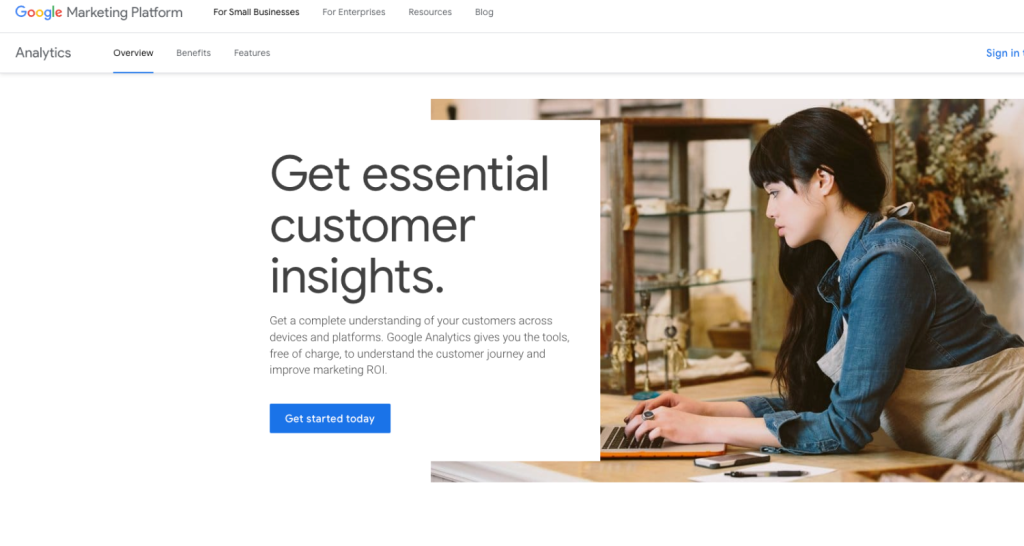You’ve probably heard of A/B testing often if you’re trying to optimize your sales and conversions. A/B testing isn’t just another buzzword. There is a reason why this term is always used whenever people talk about ecommerce performance.
A/B testing can help you make data-driven decisions that truly enhance your marketing efforts. If you ever encountered different marketing campaigns but haven’t really pinpointed what’s working or not, A/B testing can help you with this.
But here’s the kicker: A/B tests are never straightforward. There’s really no one correct way of doing this. So, you really need to spend time understanding different methods and strategies related to it.
In this blog, we’ll explore everything you need to know about A/B testing. From best practices to advanced techniques, we’ll walk you through it so you can apply it to your online business.
Understanding A/B Testing in Ecommerce
Let’s start with the basics. What is A/B testing anyway? To put it simply, A/B testing allows you to compare two versions of anything you want to test with the goal of finding which is better.
Imagine you want to test two different call-to-action buttons on your product page. You create two versions of the page—one with a green button and one with a red button. You then direct half of your website visitors to each version and measure which button leads to more clicks. This simple A/B test gives you clear, actionable insights into which version performs better.
A/B testing is essential in ecommerce growth. It lets you optimize user experience and conversion rates tailored specifically for your online business and your target audience. With proper implementation, A/B testing helps you make informed decisions backed by data, enhancing your overall marketing strategy.
Here’s why you should start implementing A/B tests in your online business:
- Data-Driven Decisions: A/B testing allows you to make decisions based on hard data rather than guesswork. Clear testing results show what works and what doesn’t, leading to more effective marketing campaigns and better customer engagement.
- Improved Conversion Rates: Testing different variables like headlines, images, and call-to-action buttons can find the best combinations that increase conversion rates. Small changes can have a significant impact on your bottom line.
- Enhanced User Experience: Each test provides insights into users’ behavior. Tailor your website to meet their needs, leading to a more enjoyable and intuitive shopping experience. This, in turn, can reduce your bounce rate and increase customer retention.
- Reduced Cart Abandonment: Address pain points that cause customers to abandon their carts through testing and optimizing the checkout process. This can lead to more completed purchases and higher overall sales.
- Competitive Advantage: Constant improvement keeps you ahead in the ecommerce game. A/B testing helps refine your website and marketing strategies, maintaining your edge over competitors.
Setting Up Your A/B Testing for Success
Before we dive into the different A/B test best practices and techniques, let’s first focus on the foundations that will help you implement effective testing. Think of this as laying the foundation to ensure everything you do afterward yields results that are meaningful to you and your business.
Establishing very clear objectives
First things first: you need clear and measurable objectives. What are you aiming to achieve with the A/B tests? Are you trying to boost traffic to your website? Are you aiming to boost conversions for a particular product? Having clear goals will serve as a starting point in designing the right tests to create.
Try asking yourself:
- What are the main metrics you want to improve?
- How are you going to measure it?
- How are you defining success?
- What is your timeframe for achieving these objectives?
Clear and measurable objectives keep you focused on what matters most to your business. It will also allow you to interpret your results more accurately. More importantly, it helps you communicate your objectives to your team, ensuring all of you are on the same page.
It’s worth noting, however, that your objectives do not necessarily define the exact A/B tests you will be performing. So, don’t misinterpret these two. A/B tests are more focused on specific aspects of what you’re trying to achieve.
For example, if your objective is to increase the sales of Product X, your A/B test is not focused on sales per se but on specific aspects of the customer journey that could lead to sales (e.g., testing two variations of product description for the same product).
Choosing key metrics for success
Once you’ve identified your objectives, the next thing you’ll need to do is determine the key metrics relevant to your objectives. Metrics such as bounce rates, conversion rates, and the like will help you measure the impact of your A/B tests.
You should think of the key metrics that directly align with your objectives. This ensures that the data you’ll gather are meaningful to what you’re trying to measure and achieve.

For example, let’s say your objective is to improve your customer engagement. For this objective, metrics such as number of visitors don’t really matter. Instead, you should be tracking clickthrough rates and time on the page your visitors spend.
Once you identify these metrics, you should ensure you have a proper way of tracking them. Use tools like Google Analytics to track these metrics accurately.
Choosing the right tools
At this point, you should have clear goals and metrics to measure. The last thing you need to prepare for effective A/B testing is selecting the right A/B testing tools. For this, the only thing you need to think about is finding tools that fit your ecommerce needs and your marketing objectives.
Thankfully, several robust options are out there to help you design, run, and analyze your tests effectively.
- Optimizely: Known for its powerful features and ease of use, suitable for both beginners and advanced users.
- VWO: Offers a comprehensive suite of testing options, including multivariate testing and heatmaps for deeper insights.
- Convert: Provides robust A/B testing capabilities with easy integration and a user-friendly interface.
These tools can help you track changes and understand how they impact user behavior, ensuring your testing efforts are both effective and reliable.
A/B Testing Best Practices in Ecommerce
Mastering split testing involves understanding and implementing key A/B test best practices. Considering there are a lot of A/B test techniques, knowing these best practices will help you get the data that matters to your business.
Let’s go over the different A/B test best practices you should remember:
Test one variable at a time
This is probably the most common mistake when doing split tests. Let’s say your objective is to increase the ‘add-to-cart’ click rate from your product page. The proper way of doing this is to test one aspect of your product page that leads to the ‘add-to-cart’ behavior.
It won’t do you any good if you’re testing a new button color and, at the same time, testing a new headline for your product page. Doing this will just bring more confusion rather than understanding what works. You’ll end up not knowing which change impacted your results.
Always isolate one variable so you can easily pinpoint what works and what doesn’t for your business. This approach makes your data more reliable. Hence, it helps you make a more informed and data-driven decision.
Patience is key
Rushing to conclusions is never a good idea when it comes to this type of test. A/B testing is meant for the long haul, making sure that the results you gather are as reliable and accurate as possible.
Always give enough time to run the tests before gathering data (or drawing conclusions from it). This helps ensure that your decisions are based on solid data, not just initial impressions. Remember, a well-run A/B test can take a couple of weeks, but the insights you gain are well worth the wait.
Establishing clear test durations
Before you even start doing A/B tests, you should already set the appropriate test durations for your tests. Make sure the test duration is enough to obtain reliable results. Obviously, running tests for too short will yield inaccurate results. But, this goes the same for running tests for too long, as it might include external factors that can skew your results.
Always establish a clear and appropriate duration for each A/B test that you’ll do. The average appropriate time is around two weeks. This approach helps in achieving statistical significance and ensures your testing results are reliable.
Learn, adapt, repeat
One A/B test is never enough. Sure, you’ll learn something out of it. But, if you really want to take advantage of the benefits associated with A/B tests, then you should make it a habit to reiterate tests.
Learn, tweak, refine, and test again. This iterative process helps continuously improve your website and marketing strategies, leading to sustained growth.
Small changes, big impact
Most people undervalue the impact that small changes can bring. Simple things like changing color, font, size, or headline can bring drastic improvements to your business. Don’t make the mistake of underestimating small changes.
Separate tests for mobile users
It’s already been proven that there are now more mobile shoppers than ever. One of the A/B test best practices you shouldn’t forget is doing separate tests for a mobile experience. For example, if you’re doing a split test for button size on the web, make sure that after this, you’ll do a split test for button size meant for mobile. Do not treat web-focused tests similarly to mobile experience. Most of the time, they’re not the same.
Prioritizing user experience in every test
While it might make sense to do A/B tests to improve your numbers, most people forget that these numbers improve because they improve user experience. A good practice when doing an A/B test is to focus on the overall user experience instead of the numbers.
Remember, a better user experience leads to higher satisfaction and loyalty. This then translates to more conversions and repeat customers. Think beyond immediate metrics and consider the entire customer journey.
Avoiding confirmation bias
Confirmation bias happens when you tend to favor information (in this case, results) based on pre-existing notions or hypotheses. While it’s always a good idea to have your own hypotheses, make sure that you avoid confirmation bias.
Always be open-minded with the results you gather. After all, every result – regardless if it’s not based on your hypothesis – is always a learning experience. Remember what we discussed earlier – learn, adapt, repeat.
Tools like Google Analytics can give you an unbiased view of your data. Avoid making assumptions based on what you hope to see. A good rule of thumb is to just focus on the data you see. Not on your hypothesis.
Ensuring you have a good sample size
Reliable test results is based on a good representative sample size. If your final data results is based on like 5% of your overall audience size, then it might not give you a statistically significant results.
Always determine the right sample size for your A/B test. There are sample size calculators that can help you identify this. This makes sure that the sample size for your split tests is a good representative of your target audience. Hence, giving you more reliable results.
Summing It Up
Doing A/B tests for your business is surely an effective way of building a sustainable growing business. However, you’ll only reap the benefits of split tests by making sure you follow the different A/B test best practices. By understanding these A/B test best practices, you’ll end up with more reliable, effective, and data-driven results that can surely help grow your business.
Remember: learn, adapt, repeat. Continue testing and bring valuable insights to improve your customer experience, boost conversion rates and achieve significant results for your business’ success.








